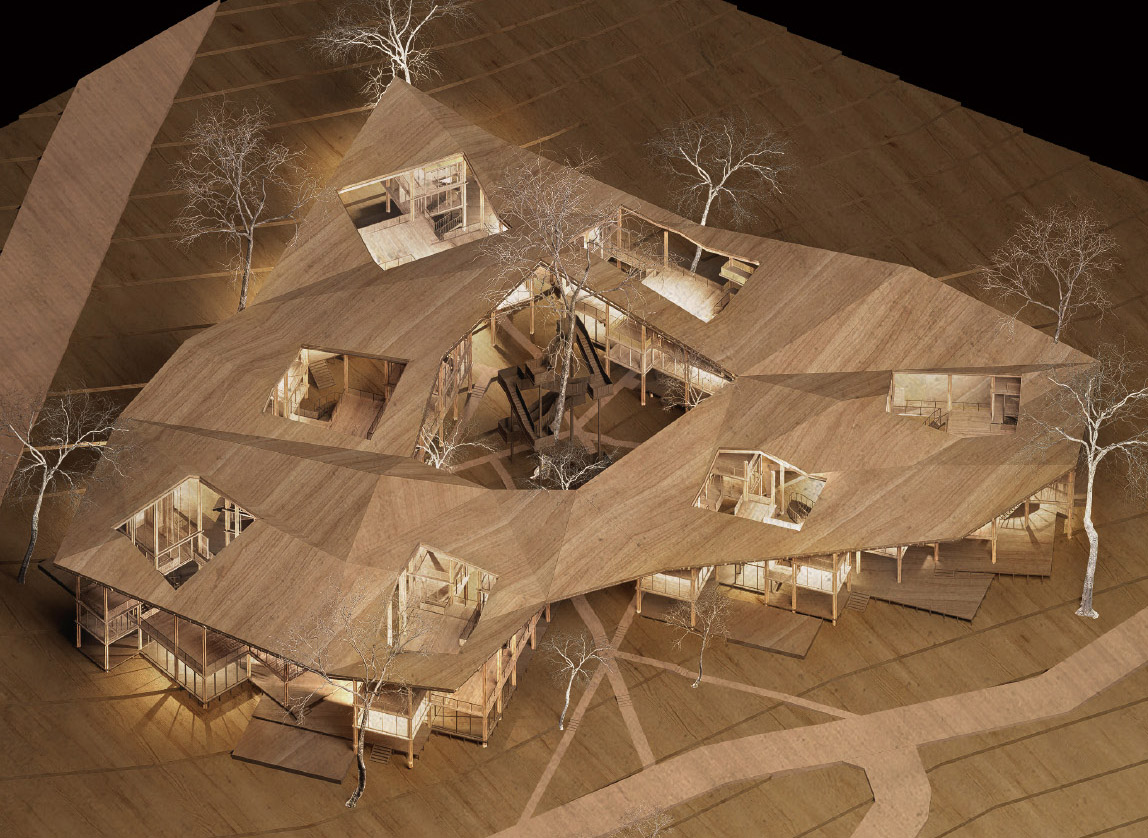Nishita Village is located in Hainan is where the Li people, an ethnic minority in China, labour and live. Thousands of years ago their ancestors migrated to the subtropical island of Hainan, and for a long time they have been living in the jungle in a close relationship with nature. The ancestors of the Li people preferred to build their villages in densely wooded areas, and also divided their territories by marking them with trees. The Li believe that every tree has a soul, so although they have a strong sense of family, they always live separately and do not cut down trees in order to make a large house. They also make clothes by cultivating cottonwood trees and harvesting wild hemp grass. And they have their own unique symbols to represent things, so the brocade of the Li people is equivalent to the carrier of the history and culture of the Li people.
The design attempts to continue the architectural principles of the original Li community, perpetuating and amplifying the surrounding environment through light, material and functional responses. By preserving the original trees on the site and building and reconnecting their houses within the forest gaps, the design attempts to restore the sense of community that has been slowly destroyed by modernisation, hoping to preserve the original connection between the Li and the plants.
Through studying the traditional lifestyle and intergenerational relationship of the Li people, the design of residential groups is carried out in the hope of rebuilding the memory of the Li community. The kapok tree is planted in the atrium as a family tree, which not only serves as a marker of the family territory, but also activates the atrium space as a family workshop, carrying the entire process of Li brocade weaving from planting to weaving, in order to protect the most important traditional crafts of the Li people.
